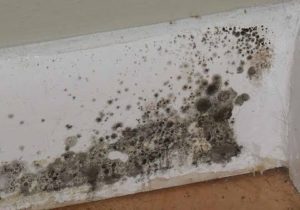 Everyone knows the feeling of disappointment and disgust that comes with opening a container of food and seeing multi-colored mold growing there. Finding moldy food or any other kind of mold in living spaces can never be a positive thing. However, while some mold, such as that found on food, is easily seen, there are other types that grow in the home that are hidden from view. The kinds that hide underneath tiles and in other secret places are the types that people must look out for in their own homes.
Everyone knows the feeling of disappointment and disgust that comes with opening a container of food and seeing multi-colored mold growing there. Finding moldy food or any other kind of mold in living spaces can never be a positive thing. However, while some mold, such as that found on food, is easily seen, there are other types that grow in the home that are hidden from view. The kinds that hide underneath tiles and in other secret places are the types that people must look out for in their own homes.
Residential mold has the potential to cause illness in residents and can also destroy the value of the home itself, in extreme cases. In order to remain free from mold-causing sickness and to keep up the value of the home, people should be familiar with the kinds of mold that can cause such significant problems.
Excess humidity and lack of ventilation are the two main conditions within the home that create an ideal atmosphere for mold spores to thrive. Some mold infestations are openly visible, but others are much more difficult to spot. Not only that, different types of mold can thrive in different areas of the home.
Penicillium
A very common type of mold in the home, penicillium appears frequently in fabric-like material, such as carpet or wallpaper. It can also thrive in chairs or sofas that have been exposed to moist conditions. Interestingly enough, penicillium is used for treating diseases when it is made into an antibiotic, and it is also used in cheese making. In the home, though, this type of mold can cause allergic reactions or asthma attacks in people who are prone to mold sensitivity.
Cladosporium
Cladosporium is another type of common mold that thrives on fabrics, but it also grows on wood. Because of its versatile nature, cladosporium can be found on wood inside or outside the home in addition to being found in carpeting. Although it inflames respiratory problems like many other types of mold, it can also cause skin and nail issues, as well. The spores of cladosporium that float through the air can cause extreme asthma in those that suffer from this disease.
Alternaria
This type of mold differs from others since it requires light moisture to thrive. Overly damp areas do not support this plant pathogen, but it can grow outside as well as inside the home. It is usually green or black in color, and certain species of alternaria can also grow on vegetables. When it grows in the home, this mold tends to affect the elderly, children and those with weakened immune systems.
Black Mold
What may be known as the type of mold that threatens people’s health the most, black mold (scientifically referred to as “stachybotrys chartarum”) thrives in the moistest of environments. Appearing greenish-black in color, this type of mold is less common than other household mold varieties, but it is by no means one to be ignored. Black mold can breed around moist pipes or air passages that tend to be continually damp. The black mold spores can then spread to other places around the house.
Finding the knowledge and guidance you need
Regardless of what type of mold people may discover or suspect they have growing in their homes, the guidance of a trusted mold testing and remediation expert is a very good thing to have. Professional help may be the deciding factor that keeps your home free from the health-related and financial consequences of living in a home with mold.

